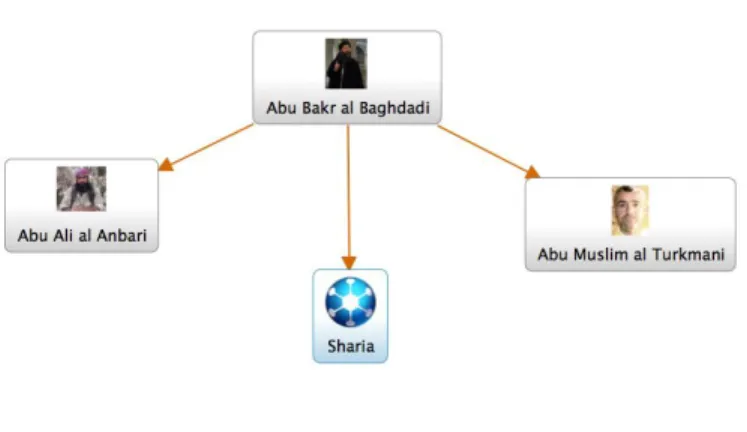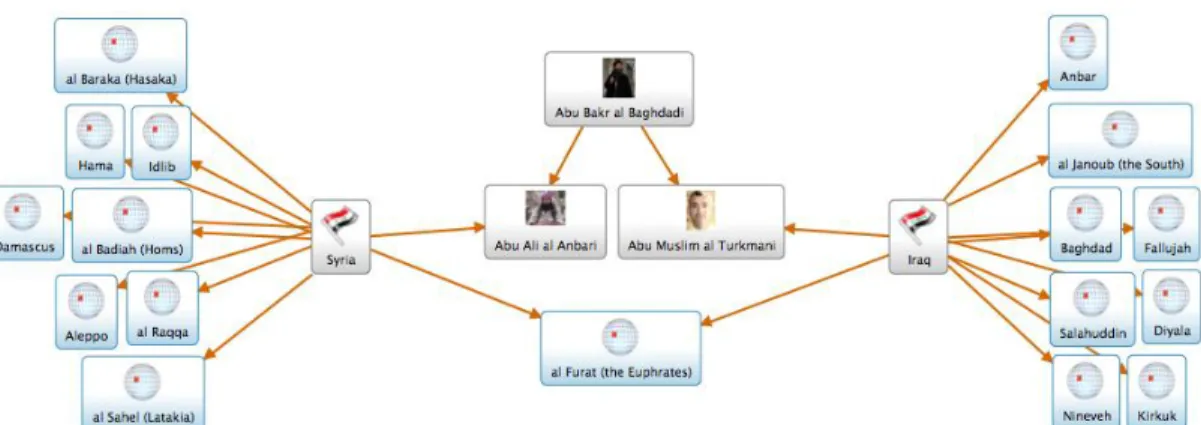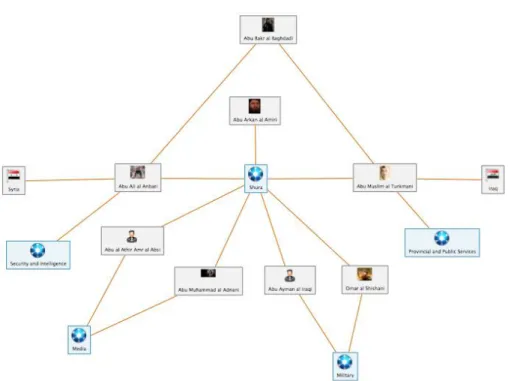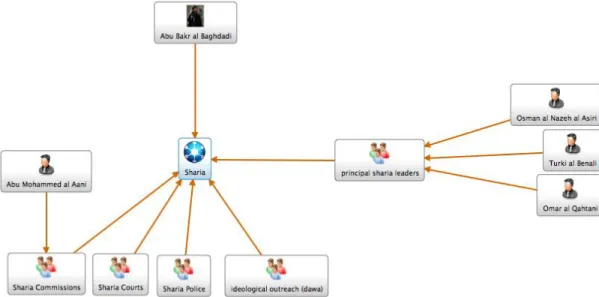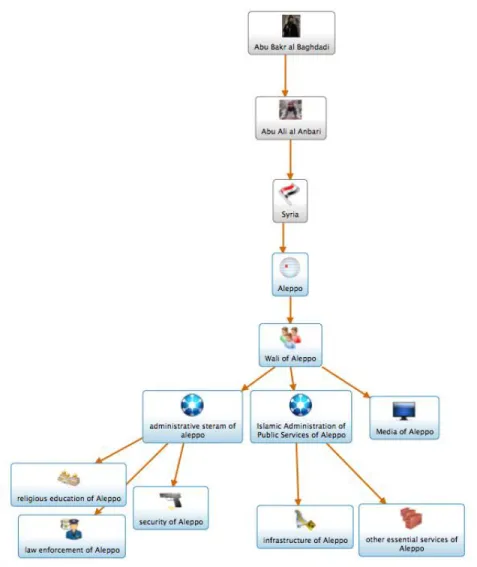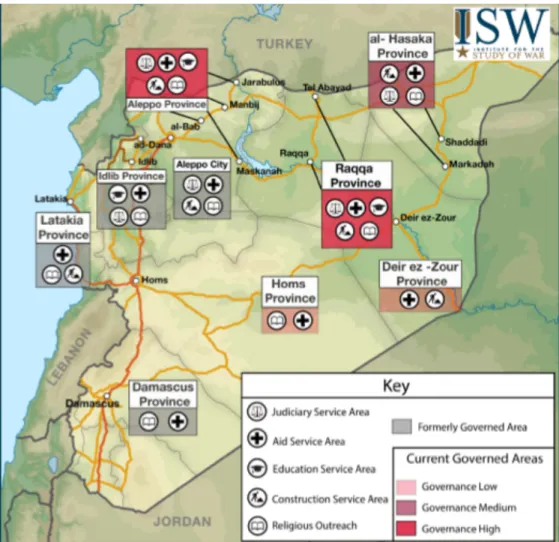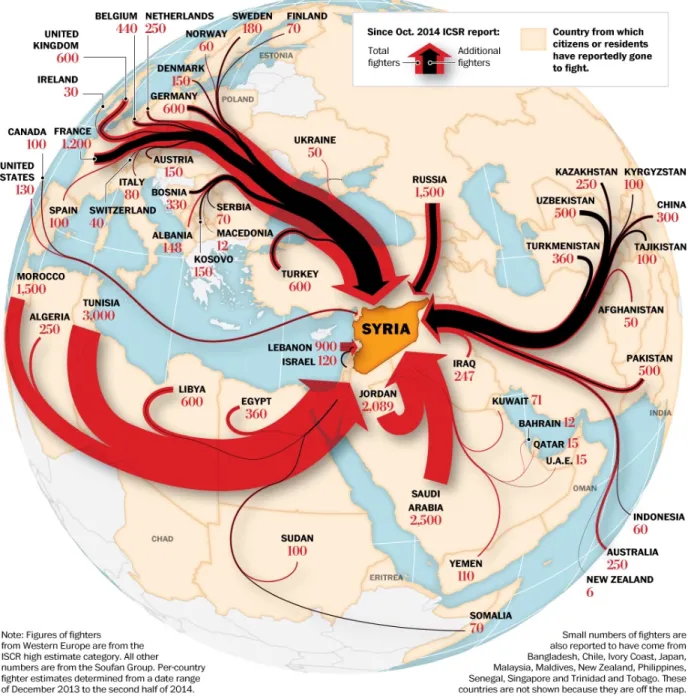Examining IS's political, military and economic activities from October 2006 to August 2014 serves the dual purpose of assessing how "close" IS appears to a state and its potential to become a state in the future. , to determine. Indicators of an effective governing Figure 1: Map of the IS's administrative divisions in Syria and Iraq.
BACKGROUND
Terminology
Origins of the Islamic State
Most of the foreign fighters recruited by IS are not indigenous to IS territory in Iraq or Syria. US military involvement against IS marks a definitive point in IS history.
Creating the ‘Caliphate’
Conveniently, IS avoids discussing the internal issues that plagued the Caliphates, and instead focuses on how the West contributed to the Caliphate's downfall. This plan is validated by the simple fact that IS's complex efforts in building effective governance are implemented in its current territory.
LITERATURE REVIEW AND METHODOLOGY
Defining Sovereignty
The last two types of sovereignty discussed by Krasner refer to the ability of a subject to establish authority over its territory. The combination of these theories of sovereignty is strongly related to the establishment of effective governance over a specific population in a specific territory.
State Actions
Krasner explains this form of sovereignty using the example of the effects of globalization on states, “when people say that globalization is eroding. The final action that states must take involves "acquiring the means to carry out the first three activities—war-making, state-making, and defense," which Tilly defines as "extraction." 64 Like Krasner's different types of sovereignty, Tilly's description of state action also focuses on the importance of establishing authority within and outside state territory.
However, the shortcomings of the explanatory theory lie in disregarding the fact that aspiring states very rarely clearly and fully fulfill all criteria for statehood. The fact that residents simply adhere to the authority of the ruling government with minimal protest or uprisings demonstrates that, to a certain extent, a ruling structure does maintain effective control over its territory.
Implications of Statehood on US Military Actions and Diplomacy
Furthermore, it is in the best interest of the US not to recognize IS as a state. By subjectively choosing which non-state entities it recognizes as states, the US directly dictates how it is able to engage these actors militarily and diplomatically.
Internal and External Actions
Thierry Baudet, a Dutch historian, addresses this issue and argues that a state's ultimate authority over territory determines legitimacy, “should a government rule unjustly and undermine the 'authority' of the state in the sense of being respected or highly are in the spotlight. esteem, [the state] would nevertheless retain [its] 'right to decide' as long as [it] retained [its] effective control.”87 In this case, 'right to decide'. Although a population may not explicitly consent to government, it implicitly consents to be governed by submitting to the authority of a state. External sovereignty, on the other hand, refers more simply to the way an aspiring state's actions are perceived by outsiders, such as engaging with other states or non-state actors.
Political, Military and Economic Characteristics
This means that [IS] has many relationships with other militant organizations, but a disproportionate number of them have proven transient and fragile […] other militants have had no choice but to work with [IS] given its strength, but maintained some distance due to fear for their long-term organizational autonomy.”90 Due to the lack of detailed information on IS interactions with external actors, in addition to the rapidly changing and often fragile nature of these relationships, the analysis of IS political, military and economic characteristics will focus on the activities, which are carried out within IS territory and not outside it. Although 'government' can include many different aspects, the official records of the UN General Assembly generally recognize a government when it "exercises effective control and authority over all or substantially all of the territory of the State and has the obedience of the majority of the population of that territory in such a way that it appears that that control, authority, and obedience are of a permanent nature.”91 In this way, administrative or bureaucratic structures can be a means by which a government attempts to maintain the obedience and control of its population. . Since one of the fundamental aspects of state formation is the maintenance of a certain territory and borders, the military apparatus often becomes a means of achieving this feature.
Hybrid State Entities
This thesis proposes the use of a new definition, "Hybrid State Entity" and three respective classes of Hybrid State Entities, to more precisely define actors such as IS in the future. State" is referring to the idea that in many cases these entities often resemble states rather than organizations with minimal. The three classes of Hybrid State Entities are fluid categories where entities can change from one class to the next as they evolve or lose their abilities.
Methodology
Finally, news reports provide the intricate details and facts regarding IS's activities on the ground. News reports are a necessary and essential source of information because of the IS's recent nature. In order to produce an accurate visualization of the IS's organizational and leadership structure, a visual network analysis is included in this thesis.
THE ORGANIZATION OF THE ISLAMIC STATE
The Executive …
The current head of IS provides this leadership and has cultivated a personality to fulfill this role. The IS has a strong administrative and organized governance system that gives strength to the organization. Ultimately, IS's executive office, led by al-Baghdadi, establishes and maintains IS's political authority.
Executive Second Tier Leadership
The executive level of IS leadership provides the ability to actually implement decisions decreed by an undisputed authority (al-Baghdadi). This allows IS time to be used effectively and empowers local leaders with practical knowledge of how best to implement decisions given local conditions. Moreover, IS leadership does not revolve around a charismatic personality, but rather around a leader who has consolidated his control and who has placed a number of capable and experienced leaders at the top of the command structure.
The Wilayat
Thomspon and Shubert, "The Anatomy of ISIS: How the 'Islamic State' Is Managed, From Oil to Beheadings". 113 Maria Abi-Habib, "Assad's Policies Helped the Rise of the Islamic State Militant Group," The Wall Street Journal. 115 A description of the map provided by ISW Syria analyst Jennifer Cafarella for The Atlantic, “The attack zones are the most straightforward and are intended to depict the areas where ISIS has engaged in or committed armed clashes or kinetic engagements (such as IEDs ) ).
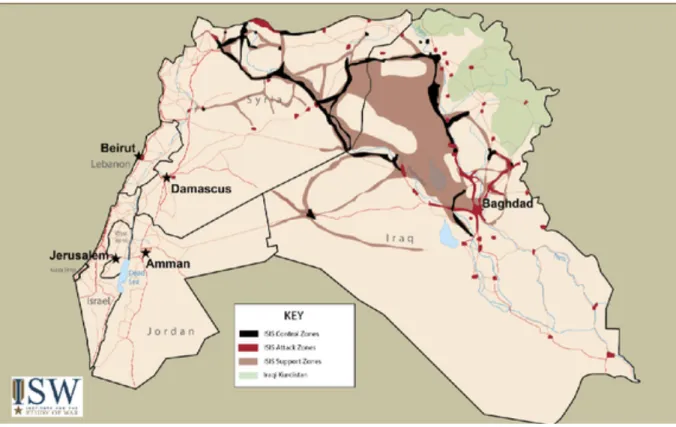
The Shura Council
The Shura Council represents one of the top levels of the IS's organizational structure, as it disseminates information directly from the executive to other councils and provinces. In addition, the Shura Council theoretically strengthens the political structure of the IS, as it strengthens the authority of the executive, because this council has the ability to remove the individual caliph from his position and choose the replacement leader. Ultimately, the Shura Council strengthens IS's effective control over its population, as it provides a way to more concisely and easily disseminate information and control from the central control authority over its territory.
The Sharia Council
IS's judicial capacity is found in the Sharia Council, which is described as "the most powerful body of the Islamic State."117 Al-Baghdadi directly leads the Sharia Council, which consists of six additional members. Finally, the council directs IS's ideological plans, both inside and outside IS's territory. IS seeks religious legitimacy from religious scholars, which is then mediated through sharia.
The Media Council
As IS's media wing constantly adapts how it disseminates its information, IS is able to broadcast information first. More importantly, IS is technologically savvy and able to use these new forms of media to its advantage. Demonstrating that it is capable of performing state-like governmental functions in parts of its territory also demonstrates IS's strengths.
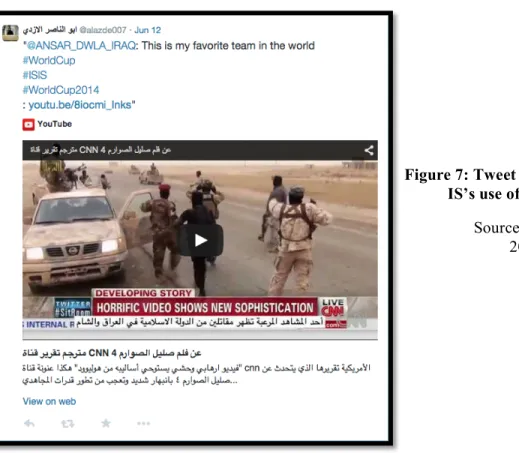
The Provincial Council and Public Services
Perhaps the most illustrative example of this is IS's control of Lake Assad, a reservoir in al-Raqqa province. In addition to poor planning in the use of key resources, IS's ability to maintain governance in the long term is questioned due to their training policies. Without the creation of a new professional class to run the technical but vital aspects of IS, the long-term survival of IS is called into question.
Conclusion
The military wing of IS is under the direct control of al-Baghdadi, through the Military Council. The IS military has set specific goals as well as a proven system to achieve these goals. Iraqi army forces have so far not posed a significant challenge to ISIS's authority.
MILITARY CAPABILIITES OF THE ISLAMIC STATE
Leadership
IS's political authority does not compete with the military apparatus, but rather commands it. IS's military success allows IS as a whole to maintain its borders and conquer new territory. So far, IS's ability to govern has not been hampered by a lack of funding.
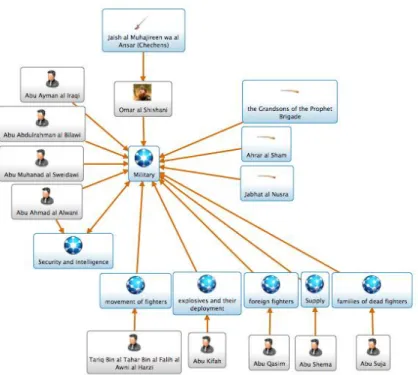
Tactics
Objectives
Urban Tactics
Adversaries
Recruitment
Support Operations and Capabilities
The IS's Intelligence and Security Council ultimately maintains the security, and therefore functionality, of the executive as it allows the Caliph to continue to perform his duties as leader. The integration between IS's intelligence capability, military and political structure was demonstrated in IS's attack on Mosul. As mentioned many times in this chapter, the IS's control of logistics to move its manpower and resources is clear.
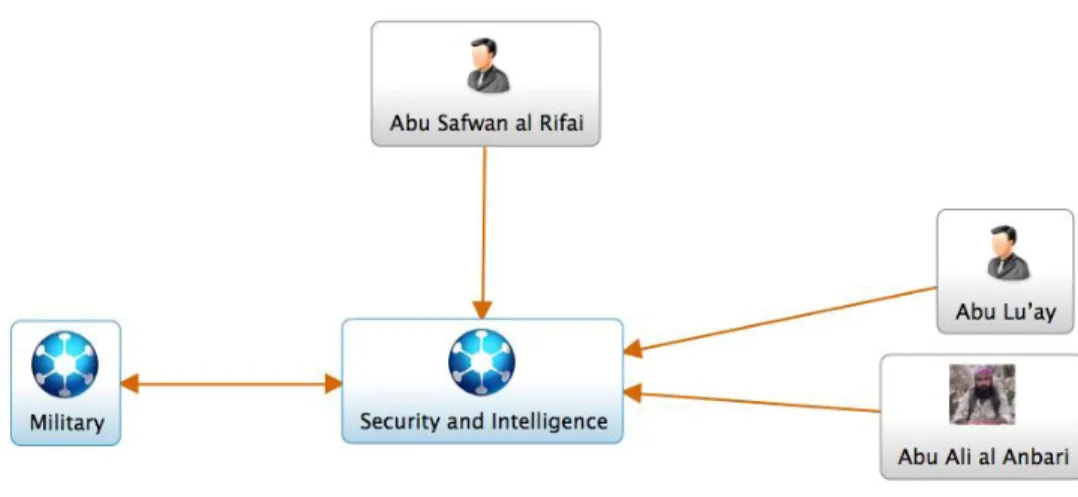
FINANCING THE ISLAMIC STATE…
The Finance Council
Likewise, IS today can be assumed to function in a similar, if not more complex, manner. Maintaining extensive records and a paper trail ensures continuity for IS operations over time as changes occur on the battlefield. Moreover, a focus on data creation shows that IS does not see itself as a temporary organization.
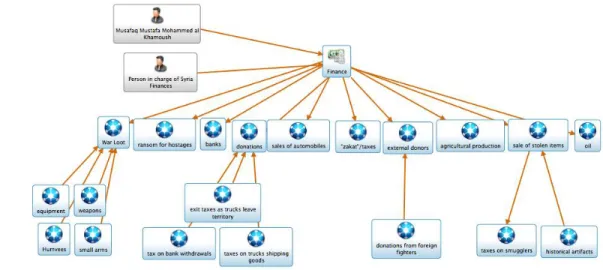
Expenses
In essence, IS demonstrates that it values its fighters by showing a willingness to spend resources on the families of fighters. At this point, it is not clear whether IS actually continues to make payments to the families of dead fighters. The other category of IS expenditures includes the purchase of materials needed to continue IS activities, both in the military and civilian sectors.
Revenue
221 There are indications that low gas prices are adversely affecting IS's markets for oil: Geoff D. In many respects, IS's characteristics and actions closely resemble those of recognized sovereign states. In the case of IS, providing better notions of what IS really is and how it works.
Academic Sources
Think Tank Reports
Weinburg, Leonard, Pedahzur, Ami, and Hirsch-Hoefler, Sivan, "Challenges in Conceptualizing Terrorism." Terrorism and Political Violence 16 (2004). A Group Calling itself a State: Understanding the Development and Change of the Islamic State.” December 2014. Felter, Joseph, and Fishman, Brian, "Al Qaeda Foreign Fighters in Iraq: A First Look at the Sinjar Records".
UN Reports
US Government and Military Reports
Translations
Other
News Reports
Iran is secretly sending drones and supplies to Iraq, US officials say. The New York Times. Al Qaeda Breaks Jihadist Group in Syria Engaged in Rebel Infighting.” The New York Times. ISIS's Harsh Form of Islam Is Rooted in Strict Saudi Religion.” The New York Times.
